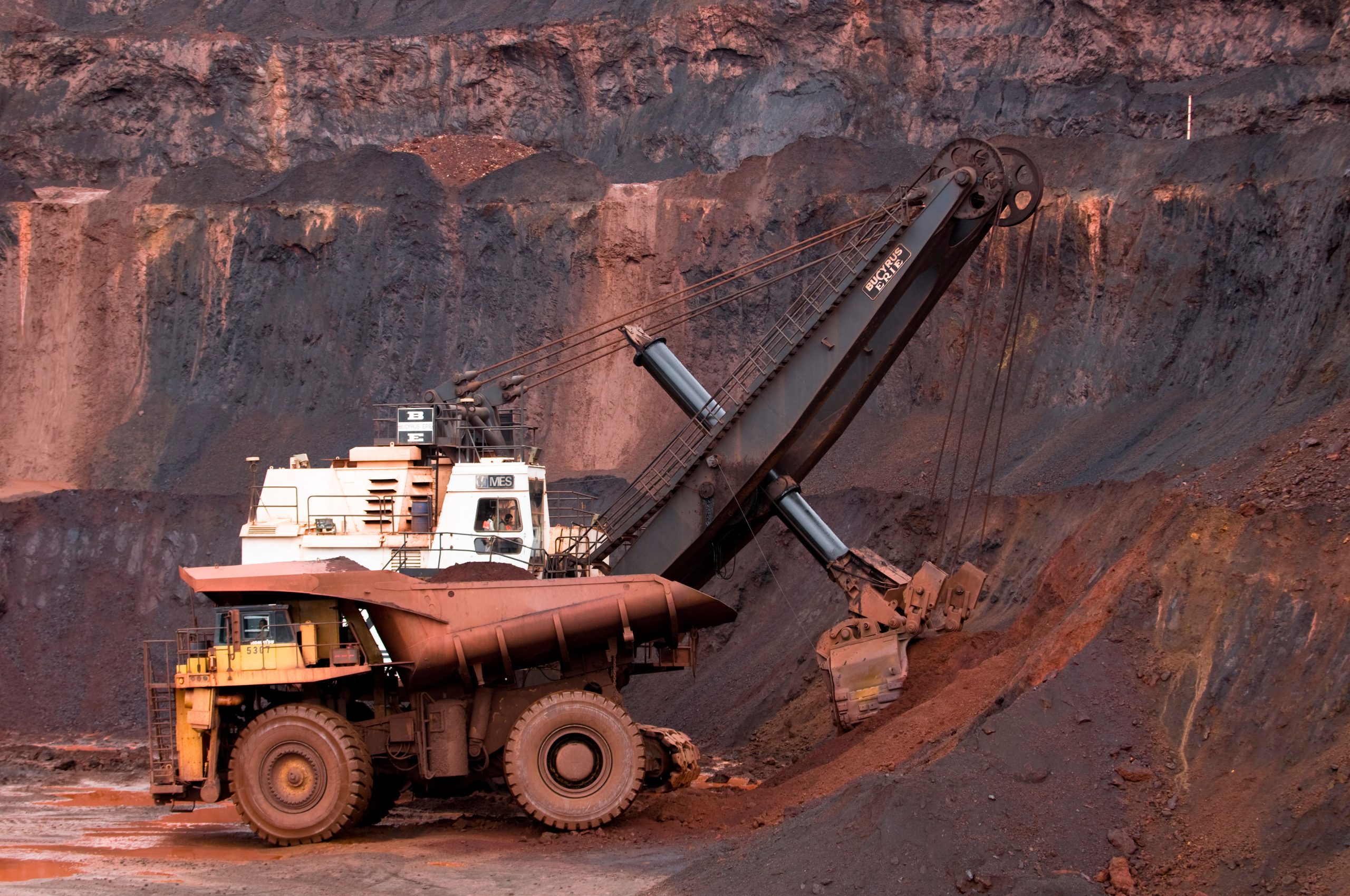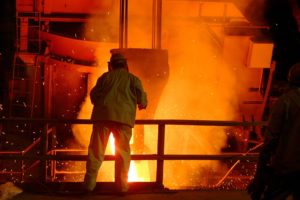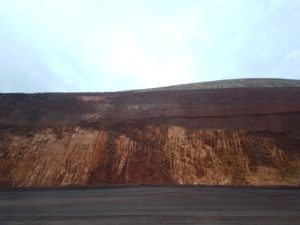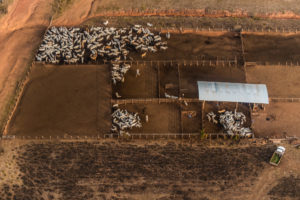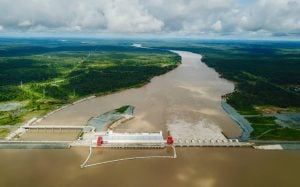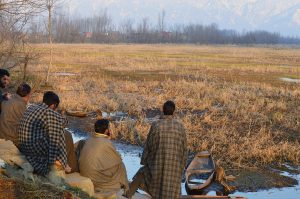State and federal prosecutors are trying to stop construction before it starts. Residents are fighting to block it entirely. Licensing is suspended. But none of this is stopping Chinese-funded companies from negotiating with politicians to move ahead with a plan to build one of the largest iron ore tailings dams in Brazil in the city of Grão Mogol, Minas Gerais state.
The dam would hold back waste from the Bloco 8 project, to dig up 27 million tonnes of iron ore each year and pipe it nearly 500 kilometres to a port in Ilhéus, in Brazil’s Bahia state. With a budget of over R$9 billion (US$2.2 billion), the project is led by the Sul Americana de Metais and Lotus Brasil Comércio e Logística companies, which are connected to the Chinese firm Honbridge Holdings.
The mine complex would occupy a large part of Fazenda São Francisco and its surroundings, a region already marked by land conflicts and drought.
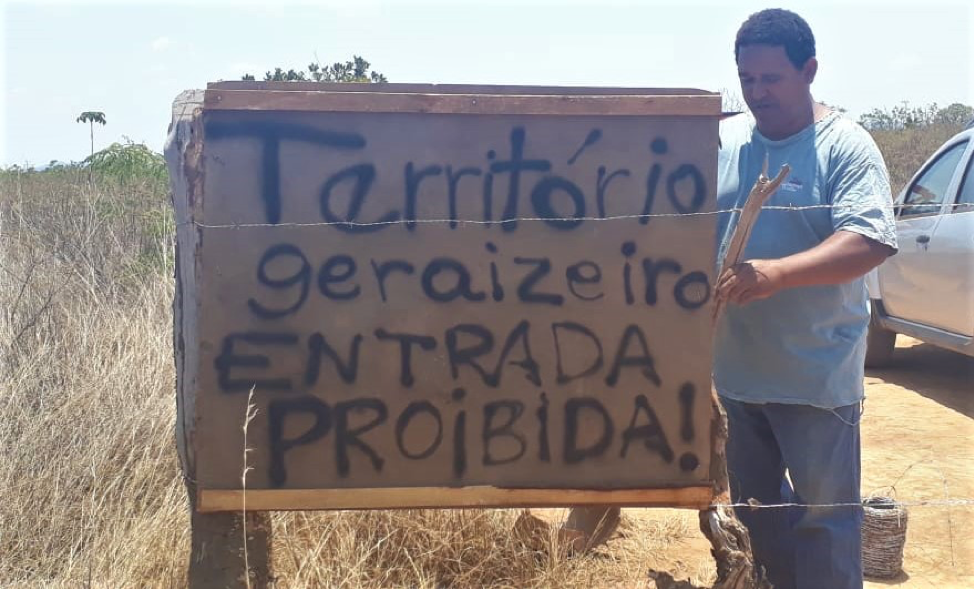
Adair Pereira Almeida, 45, is a community leader in the north of Minas Gerais where Grão Mogol is located. He considers the project one of the biggest challenges traditional communities face.
“This project is a death threat to the population and to the rivers and streams that maintain our way of life,” he states. “It will affect about 2,000 people in the region. Meanwhile, the state government accepts everything the mining companies propose.”
Water shortage
An enormous amount of water would be needed to operate the mine and to pipe the iron ore 482 kilometres from Grão Mogol to Ilhéus, for export to China and other countries.
482km
of pipeline will stretch from the mine to the port of Ilhéus
Sul Americana de Metais already has authorisation from the Brazilian National Water Agency to withdraw 51 million cubic metres per year from one of the reservoirs supplying the region.
At the time of writing, that reservoir was less than 16% full. After all, in semi-arid northern Minas Gerais, drought is normal.
The mining company is trying to work around the problem of water scarcity by constructing other dams to supply industry and residents.
Alexandre Gonçalves, of the Pastoral Land Commission, fears that these promises are only being made to encourage licensing agencies and the public to accept the project.
“There is no point in having a dam if distribution to the communities is not guaranteed. There are many cases in which people have never seen a drop of water,” he says.
Fearing serious damage to traditional peoples and the natural environments of northern Minas Gerais, entities such as the Pastoral Land Commission and the People Affected by Dams Movement have made formal protests about the mine to the federal prosecution services.
Political negotiations over iron ore mine
Sul Americana Metais has been defeated in previous attempts to license its mine complex. The process began in 2010, when the company was purchased for approximately US$430 million (today, almost R$ 1.8 billion) by Honbridge Holdings, which is headquartered in Hong Kong.
Sul Americana de Metais says it wants an initial licence for its mine by March next year, and has intensified meetings with politicians and the people who the mine would affect.
The ‘geraizeiros’ do not want meetings with the company. They will only consult with the government
In September, Minas Gerais governor Romeu Zema participated in the opening ceremony for an industrial fair in the city of Montes Claros and a business seminar promoted by Sul Americana de Metais, the municipal and state governments and the Chinese consulate.
On the same day, Zema signed a memorandum of understanding that confirmed official support for the Bloco 8 project in Grão Mogol.
Two months later, in early November, the company’s president Jin Yongshi met with senator Carlos Viana in Brasilia to talk about mining.
Meanwhile, community leader Adair Almeida says that the company is trying to divide the inhabitants of the city by scheduling separate meetings with each community. He also regrets that state government representatives have not yet come to talk to any members of his community.
“The ‘geraizeiros’ do not want meetings with the company. They will only consult with the government,” he explained.
Geraizeiros are traditional residents of the Cerrado region in northern Minas Gerais, where the vegetation is what they call gerais, a type of savannah. They live in the foothills of plateaus and along the rivers, surviving on foraging, small-scale agriculture and livestock production.
Anything for a licence
The political negotiations are taking place alongside environmental licensing processes, which have been expedited since Jair Bolsonaro became president and began scrapping environmental agencies and regulations.
In 2016, Brazil’s environmental protection agency, IBAMA, denied a licence for the Bloco 8 mining project due to excessive impacts on water and the environment. The project could worsen droughts and pollute the air, inspectors said.
IBAMA also warned about the large quantities of tailings that the mine would generate, and classified the proposed dam that would contain them as out of line “with more modern mining techniques”.
845million
cubic metres of waste will be held by the tailings dam
The mega dam planned by Sul Americana de Metais could store up to 845 million cubic metres of tailings. That is eight times more than that authorised for the dam in Mariana (also in Minas Gerais) which held waste for the Samarco mining company and ruptured in November 2015, killing 19 people and destroying the Doce River.
The method chosen for the dam in Grão Mogol, known as “upstream tailings dam”, which incorporate tailings materials into the dam for support, is the same used in Brumadinho that collapsed earlier this year. State law and the rules of the National Mining Agency prohibit dams of this type. The company says that the technology for its dam will be different and safer.
After the rejection by IBAMA, Jin Yongshi, president of Sul Americana de Metais, and a Chinese national called Kuo Hsin Yi created Lotus Brasil Comércio e Logística in November 2017 to run the pipeline project. The companies then adopted a new strategy, asking for separate licences for the pipeline and the mine.
In June 2018, IBAMA again denied licensing for the project. But a year later, with Bolsonaro in office, the agency made a U-turn.
In July 2019, IBAMA president Eduardo Bim allowed the licence for the pipeline to be evaluated by IBAMA and the permits for the iron mine to be evaluated by the Minas Gerais state government. This de-linked the impact of each project on the other’s environmental licensing process, making both seem less harmful.
Even so, the mine still needs approval from Minas Gerais State’s Environment Department, which told Diálogo Chino that the licence is suspended until the project is adjusted to comply with dam safety legislation and public hearings are held.
State and federal prosecutors reacted in early November, filing a public civil suit to prevent the divided licensing between IBAMA and the Minas Gerais government.
In a press release, prosecutors called the creation of Lotus Brasil Comércio de Logística by the Chinese to restart the licensing process “a manoeuvre to evade the requirements of the federal agency [IBAMA]”.
The case is ongoing.
History of battles
The clock read 7:30 am when Almeida, the community leader in the Vale das Cancelas, was surprised by three supposed military police at the gate of his house. The men showed their badges and warned that if anyone from the village came near Fazenda São Francisco, they would be met with bullets. This threat came in August 2015.
The threat to Almeida is part of decades of conflict in the north of Minas Gerais. Studies by the state government estimate that this part of Brazil holds 20 billion tonnes of iron ore, gold and other riches.
20billion
Minas Gerais' estimated iron ore reserves
Land fraud schemes to grab public areas began in this region at the beginning of the last century, according to a study by the University of São Paulo.
And in July of this year, 21 people were freed from slave labour or fraudulent hiring schemes at charcoal kilns in the Fazenda São Francisco region, where the Bloco 8 project is planned.
“It is a model (of economic development) that uses violence to strike against the base of traditional populations, which reduces common lands and resources in these communities,” says Gonçalves, of the Pastoral Land Commission.
The future of the “geraizeiros” is uncertain with the arrival of the Chinese mining company. They are afraid they will be driven out by pollution (some live within 200 metres of the planned mine site), according to people familiar with the project who requested anonymity.
Sul Americana de Metais did not respond to our request for an interview. In a note sent to Diálogo Chino, it stated that its controlling company, Honbridge Holdings, has invested approximately US$73 million (R$296 million) in the Grão Mogol project since March 2010. The company plans to create 6,200 jobs in deploying the mine, and another 1,100 for its operations.
“What we can guarantee is that the process will be conducted with respect for people, their histories, and the local culture; through dialogue and with the participation of persons and families involved in the process of implementing this venture,” said the note.
